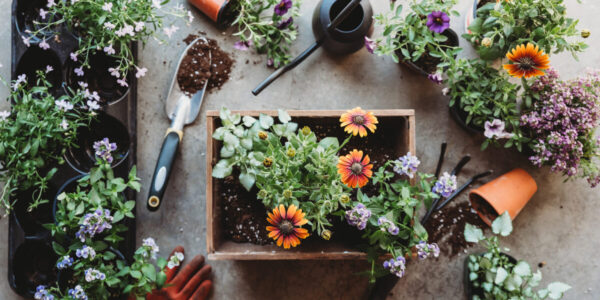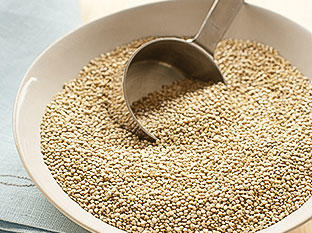
Measuring Guidelines

Many fine cooks just stand at the stove and stir in handfuls of this and that, with no measuring cups or spoons in sight. However, they are measuring—by sight and feel and experience. Unless you can stand by the elbow of such a cook, watching and tasting, you have to rely on a record—the recipe—to summon up the original dish.
At Sunset, we take pains to measure precisely, so that you have the best chance of duplicating what we’ve created for you in our Test Kitchen. (Especially in baking, which is more of a science, exact amounts do matter.) Whenever measuring to the n-th degree doesn’t greatly affect the outcome, we give a range or leave the amounts up to you.
Store rice and grains in smaller, prepacked portions so there’s no need for measuring cups when you’re cooking.
MEASURING EQUIPMENT
Liquid measuring cups are most precise for liquids. They come in 1-, 2-, and 4-cup sizes, are made of glass or clear plastic, and have a spout. Measurement marks are on the sides, and there’s plenty of space above the highest marking so that you can measure a liquid accurately without it spilling over. To measure, put the cup on a level surface, pour in the liquid, and read the marking at eye level. Measuring spoons (see below) are fine for small amounts of liquid.
Dry-measure cups usually come in nested sets of 1/4-, 1/3-, 1/2-, and 1-cup measures. These are best for dry ingredients, because you can level off the top with a metal spatula or straight-sided knife. If a recipe includes any special measuring instructions, like “firmly packed” or “sift before measuring,” be sure you do—it will make a big difference in the final volume.
Measuring spoons usually come in sets of 1/4-, 1/2-, and 1-teaspoon measures (and sometimes 1/8 teaspoon), plus 1 tablespoon.
HOW TO MEASURE SOME KEY INGREDIENTS
Brown sugar. We always call for packed brown sugar, since it yields the most consistent amount. Spoon it into the cup, pack it down, and level it off.
Flour. Gently spoon it into the cup, piling it high; level it off with a metal spatula or a straight-sided knife. Don’t measure flour by scooping it out of the canister—it packs unevenly.
Solid shortening or lard. Pack it into the cup with a thin spatula and run the spatula through the shortening to pop any air bubbles. Pack again and level off.
Shredded cheese. We measure by weight, because no two shredders are alike; if you use a Microplane to shred, you will have a fluffier, more voluminous pile of cheese that takes up more space in a measuring cup than coarsely grated cheese.
Speaking of measuring by weight, it’s by far the most accurate way to measure. However, most home cooks in this country are more comfortable measuring by volume, so volume is our standard. When it comes to whole ingredients, though, we do call for weighing, since it’s a shopping aid: There are scales in every grocery store and weight measurements on most packages. At home, to double-check, it helps to weigh again. The best tool is a digital scale, because it’s very precise and gives readouts in both ounces and grams.
